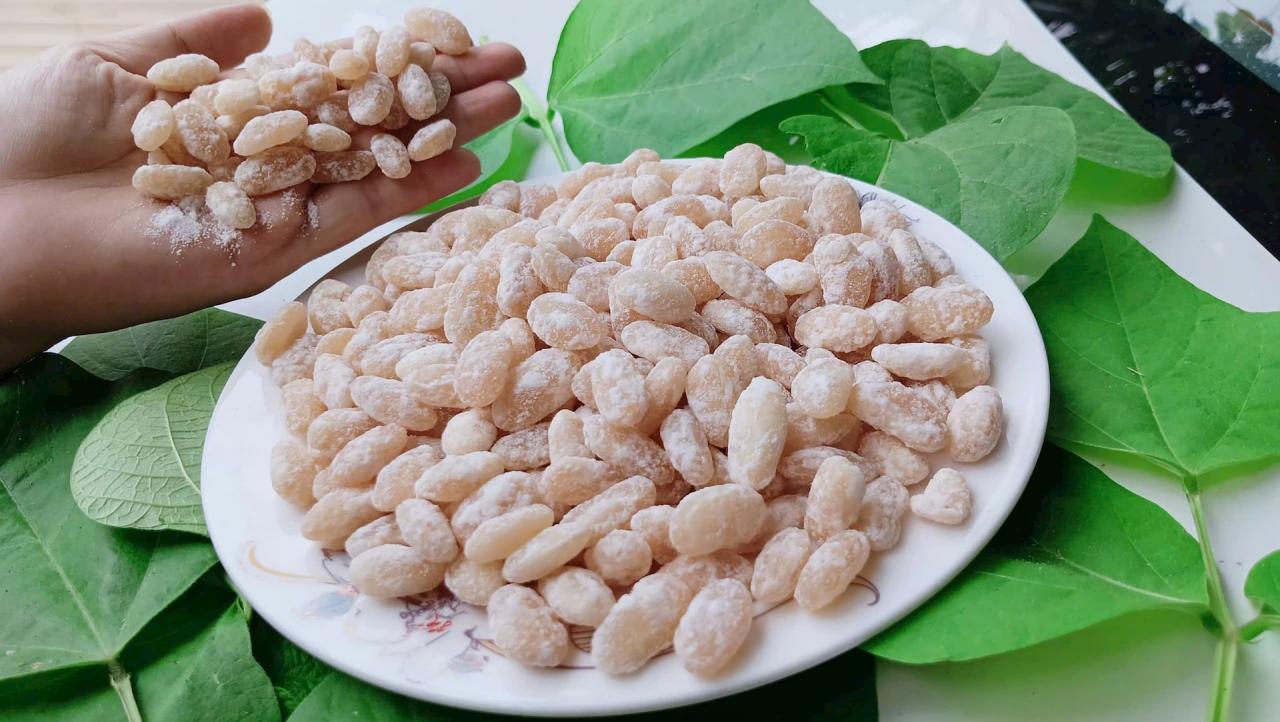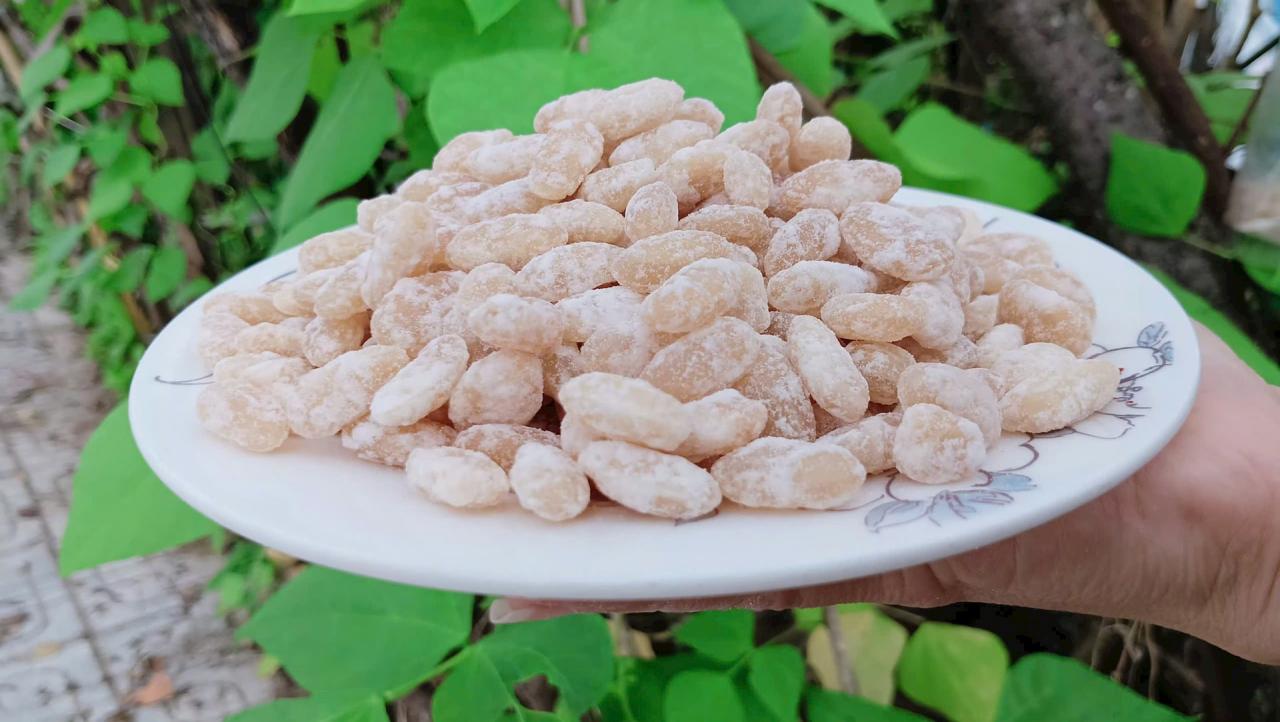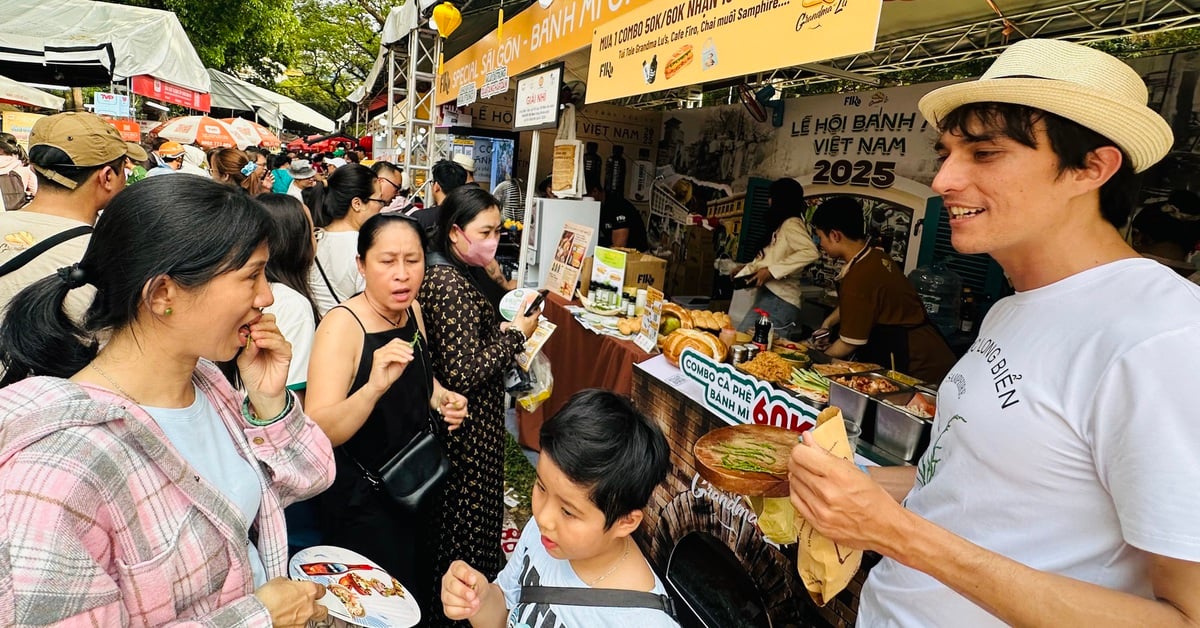
My grandmother’s garden grows a lot of vegetables and fruits all year round, and the soil is especially suitable for beans: green beans, broad beans, and black beans. White beans, in particular, are almost pest-free. Year after year, at the beginning of September, my grandmother tills the soil to plant beans.
The white beans quickly branched out, each young bud jostling to rise high to enjoy the winter wind. Occasionally, I helped my grandmother pluck the tops so the plants would branch out and bloom so that the vines would bear fruit. The young beans laden with fruit that my grandmother picked and boiled or stir-fried were all favorite dishes of the whole family.
By the end of the 11th lunar month, when all the nutrients have been squeezed out to nourish the beans, the bean stalks begin to dry out. Grandma collects the beans, peels them, dries them, and stores them carefully for use throughout the year.
Dried white beans cooked with sugar are both fragrant and sweet. Sometimes, when I go to the market and find pork bones or trotters, my grandmother will simmer them with white beans. However, the most anticipated dish is the bean jam that my grandmother makes first to worship our ancestors, then to serve guests and the whole family during Tet.

The last days of December were freezing cold, and the garden was damp. Occasionally, on a sunny day, my grandmother would bring out a basket of dried white beans to dry.
Around December 27, my grandmother sat down and carefully removed the unripe and bad beans, then washed them thoroughly with water. After washing, she soaked the beans for a few hours until they expanded, washed them again, and put them in a pot to boil with a little salt, the amount of water had to cover the beans.
Occasionally, my grandmother would use a ladle to stir the beans and check to add more water if it ran out. Depending on the size of the beans, my grandmother would adjust the cooking time until the beans were soft but not mushy. After boiling, she would take the beans out and drain.
Next is the sugar marinating step. Grandma's hands are nimble, for each layer of beans she adds a layer of sugar, then another layer of beans, a layer of sugar with a ratio of one kilo of beans to half a kilo of sugar. Doing it this way, the beans will absorb the sugar evenly and avoid having to stir or shake, which can easily crush the beans and make them look unattractive. I often see my grandmother marinate the beans overnight with sugar.
Early the next morning, my grandmother started a fire to simmer the beans. At first, she turned the fire up high until it boiled, then reduced the firewood to a simmer. The dark yellow sugar water melted, the sound of firewood crackling, and the aroma of jam began to spread throughout the kitchen.
When the sugar water dries up and the beans become clear, turn the heat down to low and stir gently so the beans don't break. Cook for about half an hour. Test the beans to see if they are crispy, then they are almost done. Add more fragrant powder and turn off the heat. After removing from the heat, my grandmother continues to shake the pan gently so that the jam is completely dry. Pour the beans onto a tray, spread evenly, let them cool completely before putting them in a sealed jar.
Every year, even though Tet hasn't come yet, my grandmother has set aside a jar and told her to let her grandchildren eat first, lest they wait around in pity! The batch of jam has a distinctive aroma of beans, ginger, kitchen smoke, and the scent of my grandmother's betel and all the love of the elderly for their children and grandchildren.
Source: https://baoquangnam.vn/vi-tet-tu-mut-dau-vuon-nha-3147729.html





![[Photo] Visiting Cu Chi Tunnels - a heroic underground feat](https://vstatic.vietnam.vn/vietnam/resource/IMAGE/2025/4/8/06cb489403514b878768dd7262daba0b)
















































































Comment (0)